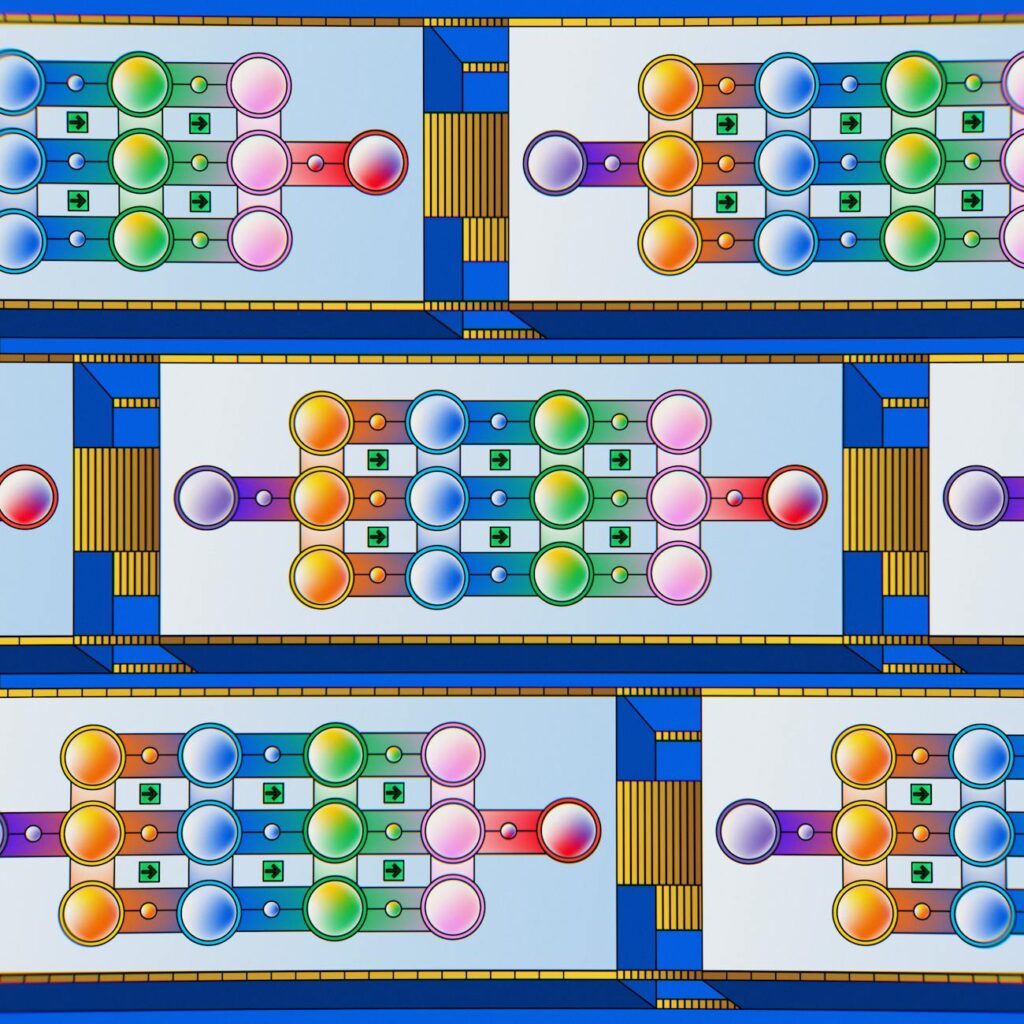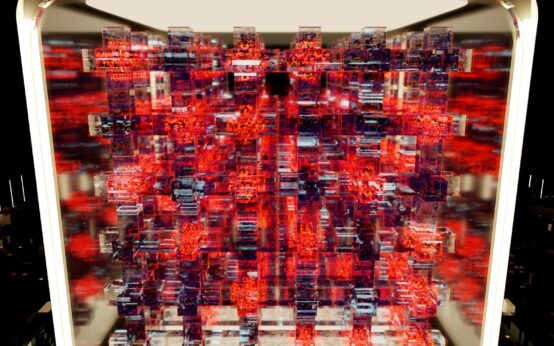The Future is Decentralized: Why Social Media on the Blockchain is More Than Just Hype
Let’s be honest. Social media feels a bit broken, doesn’t it? We scroll through feeds curated by mysterious algorithms, give away our personal data for free, and watch as creators struggle to get a fair cut. We’ve all felt that twinge of unease, that feeling of being a product, not a user. For years, we’ve accepted this as the price of admission. But what if there was a different way? What if we could rebuild the system from the ground up? That’s the core promise of social media on blockchain, a technological shift poised to fundamentally change our digital interactions.
This isn’t just about crypto bros and NFTs. It’s about a fundamental rewiring of power on the internet. It’s about taking back control from the tech giants and putting it where it belongs: in the hands of the users and creators. We’re talking about platforms where your identity, your content, and your social connections are yours to own and control, not rented from a corporation. It sounds radical. It is. And it’s already happening.
Key Takeaways
- True Ownership: Blockchain technology allows you to truly own your profile, content, and social graph. You can take your data with you to any compatible app.
- Censorship Resistance: By decentralizing data storage, these platforms make it incredibly difficult for any single entity to delete content or ban users arbitrarily.
- Creator-First Economies: New monetization models, like tipping with crypto or selling content as NFTs, allow creators to earn directly from their audience without intermediaries taking a huge cut.
- Transparency: The rules of the platform—from moderation policies to algorithm logic—can be built into open-source smart contracts, making them transparent and verifiable for everyone.

What’s So Wrong with Social Media Today?
Before we can appreciate the solution, we have to get real about the problem. The current model, often called Web2, is built on a foundation of centralization. A handful of massive companies own the servers, control the code, and ultimately, call all the shots. This architecture has led to some serious, systemic issues.
The Data Dilemma: You’re the Product
Ever had a private conversation about a product, only to see an ad for it moments later? It’s creepy, and it’s by design. On traditional platforms, your data is the most valuable asset. Every click, like, share, and private message is collected, analyzed, and used to build an incredibly detailed profile of you. This profile is then sold to advertisers. You aren’t the customer; you are the product being sold. This model creates a perverse incentive for platforms to be as addictive as possible to maximize data collection. Privacy is an afterthought, if it’s a thought at all.
The Censorship Conundrum
Centralized platforms have absolute power over what is said and who gets to say it. While moderation is necessary to combat spam and illegal content, it’s a slippery slope. Content moderation policies are often opaque, inconsistently enforced, and can be influenced by corporate interests or government pressure. One day you have a thriving community, and the next, your account could be suspended or deleted with little to no explanation or recourse. This isn’t just an inconvenience; it’s a threat to free expression.
The Algorithm’s Invisible Hand
What you see in your feed isn’t a simple chronological list of what your friends have posted. It’s a carefully crafted reality, sculpted by an algorithm designed for one primary goal: to keep you on the platform longer. This often means prioritizing sensational, outrageous, or emotionally charged content because it generates the most engagement. The algorithm is a black box. We have no say in how it works, and we can’t opt out. It shapes our opinions, influences our moods, and can even polarize society, all in the name of maximizing ad revenue.
How Social Media on Blockchain Changes Everything
This is where things get exciting. Blockchain offers a completely different architectural foundation. Instead of a central server owned by a company, it uses a distributed network of computers. This simple change has profound implications for social media, flipping the old model on its head.
True Digital Ownership: Your Data, Your Rules
This is the big one. On a blockchain-based social network, your identity can be linked to your crypto wallet. Your profile, your posts, your videos, and even your list of followers can be stored as assets (like NFTs) that you, and only you, control. Think about that. If you decide to leave a platform, you don’t lose everything. You can take your entire social graph—your friends, followers, and content—with you to another app built on the same protocol. It’s like having a single phone number you can use with any mobile carrier. This is called portability, and it’s a game-changer. It forces platforms to compete for your business by offering better features and experiences, not by holding your data hostage.
Imagine your social profile not as an account you rent from a company, but as a piece of digital property you own, like a house. You decide who comes in, how it’s decorated, and if you want to move, you pack everything up and take it with you.
Censorship Resistance: The Unstoppable Conversation
When content is stored on a decentralized network of thousands of computers around the world, there’s no single ‘off’ switch. To remove a piece of content, you’d have to convince a majority of the network to do so, which is nearly impossible. This creates a powerful foundation for free speech. While it also presents challenges for moderating genuinely harmful content (a problem the space is actively working to solve with community-driven moderation tools), it provides a powerful defense against arbitrary or politically motivated censorship. Your voice can’t be silenced by a single corporate decision.
Creator-Centric Economies: Monetize Your Content Directly
For too long, creators have been at the mercy of platform ad-revenue-sharing models that are often unpredictable and unfair. Blockchain blows this model wide open. It enables direct, peer-to-peer value transfer. Your followers can tip you directly with cryptocurrency for a post they love, with no intermediary taking a 30% cut. You can sell your articles, photos, or music directly as NFTs, giving buyers verifiable ownership. You could even create your own social token, allowing your most loyal fans to invest in your success. This shifts the power dynamic dramatically, allowing creators to build their own independent economies around their communities.
Transparency and Trust: See How the Platform Works
Tired of shadowbanning and confusing rule changes? On many decentralized platforms, the core logic is built into open-source smart contracts. This means anyone can read the code to understand how the system works. How is content moderated? How is revenue shared? What actions will get you penalized? It’s all there in the open for public audit. This level of transparency builds trust and holds the platform accountable to its users, not its advertisers.

A Look at the Pioneers: Current Blockchain Social Platforms
This isn’t just theory; developers are actively building this future. While the space is still young and experimental, several projects are leading the charge.
Lens Protocol
Lens is what’s known as a “social graph protocol.” It’s not a single app, but a foundation upon which hundreds of different social apps can be built. When you create a profile on Lens, you mint a “Profile NFT.” This NFT is the key to your digital identity. All your content, followers, and interactions are linked to it. You can then use this single profile to log into a variety of apps—a video-sharing app like Lenstube, a professional networking app, or a Twitter-like app like Lenster. Your followers and content follow you everywhere. It’s the ultimate example of data portability.
Farcaster
Farcaster takes a similar approach but emphasizes “sufficient decentralization.” It aims to strike a balance between the ideological purity of full decentralization and the practical need for a good user experience. You control your identity, but the data is stored on a network of “hubs” that make the experience feel fast and snappy, more like the Web2 apps you’re used to. The ecosystem of apps built on Farcaster, like the popular client Warpcast, is growing rapidly and fostering a high-quality community.
DeSo (Decentralized Social)
DeSo is a custom-built blockchain designed specifically to handle the scale and complexity of social media applications. It focuses heavily on novel monetization features, like “creator coins” that users can buy and sell, allowing them to speculate on a creator’s future popularity. It’s a bold experiment in merging social mechanics with financial markets.
The Hurdles We Still Need to Overcome
Let’s not get ahead of ourselves. The road to mass adoption for decentralized social media is paved with challenges. It’s not all sunshine and rainbows. Building this new internet is hard.
- Scalability and Cost: Blockchains can be slow and expensive. Every interaction, like a post or a follow, can cost a small transaction fee (a “gas fee”). While technologies like Layer 2s are making this much cheaper and faster, it’s still a significant technical hurdle to handle the billions of interactions that happen on a platform like Twitter every day.
- User Experience (UX): Let’s be frank, crypto can be confusing. Setting up a wallet, managing private keys, and navigating gas fees is not something your grandma is going to do. The onboarding process for these platforms needs to become as seamless and intuitive as signing up for Instagram. This is perhaps the single biggest barrier to mass adoption right now.
- Content Moderation: The very thing that makes these platforms censorship-resistant also makes them difficult to moderate. How does a community deal with hate speech, harassment, or illegal content in a decentralized way? Projects are experimenting with user-run DAOs (Decentralized Autonomous Organizations) and reputation systems, but there’s no silver bullet yet.
- The Network Effect: Social media is only useful if your friends are on it. Centralized giants have a massive head start with billions of users. Convincing a critical mass of people to leave the platforms they know for something new and unfamiliar is an uphill battle.

Conclusion: A Marathon, Not a Sprint
So, what’s the bottom line? The shift to social media on blockchain won’t happen overnight. It will be a gradual process, filled with experiments, failures, and breakthroughs. The user experience will get smoother, the costs will come down, and the value proposition will become clearer.
What’s undeniable is that the fundamental ideas—user ownership, censorship resistance, and creator empowerment—are incredibly powerful. They represent a direct response to the deep-seated problems of our current digital world. This is about more than technology; it’s a movement to build a more equitable, transparent, and user-centric internet. The future of social media isn’t just about new features; it’s about a new foundation. And that foundation is being built, block by block, on the blockchain.
FAQ
Is my data completely public on a blockchain social network?
Not necessarily. While blockchains are transparent, it doesn’t mean all your data has to be public. Your on-chain identity is pseudonymous (linked to a wallet address, not your real name). Furthermore, developers are building solutions for encrypted messaging and private data storage that still give you ownership without broadcasting everything to the world. You have control over what is public and what is private.
Is it difficult or expensive to use these new platforms?
Right now, it can be more complex than traditional social media. You need to set up a crypto wallet, and there might be small transaction fees. However, the user experience is improving at a lightning pace. Many new platforms are subsidizing initial transaction fees and creating much simpler wallet setup processes to make onboarding as easy as possible. As the technology matures, the cost and complexity will continue to decrease significantly.



 What is a Flash Loan? A DeFi Deep Dive for Beginners
What is a Flash Loan? A DeFi Deep Dive for Beginners  Crypto Swing vs Day Trading: Which Style Wins?
Crypto Swing vs Day Trading: Which Style Wins?  A Guide to NFT Generative Art Platforms (2024)
A Guide to NFT Generative Art Platforms (2024)  Crypto’s Carbon Footprint: The Real, Nuanced Story
Crypto’s Carbon Footprint: The Real, Nuanced Story  Join a Web3 Community: The Ultimate Networking Guide
Join a Web3 Community: The Ultimate Networking Guide  What Are AMMs? Automated Market Makers Explained Simply
What Are AMMs? Automated Market Makers Explained Simply  What is a Flash Loan? A DeFi Deep Dive for Beginners
What is a Flash Loan? A DeFi Deep Dive for Beginners  Crypto Swing vs Day Trading: Which Style Wins?
Crypto Swing vs Day Trading: Which Style Wins?  A Guide to NFT Generative Art Platforms (2024)
A Guide to NFT Generative Art Platforms (2024)  Crypto’s Carbon Footprint: The Real, Nuanced Story
Crypto’s Carbon Footprint: The Real, Nuanced Story  Join a Web3 Community: The Ultimate Networking Guide
Join a Web3 Community: The Ultimate Networking Guide  What Are AMMs? Automated Market Makers Explained Simply
What Are AMMs? Automated Market Makers Explained Simply